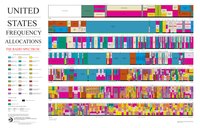
Photo from wikipedia
Cooperative spectrum sensing significantly improves sensing reliability in cognitive radio networks. However, in large-scale secondary networks, spectrum availability is heterogeneous, i.e., secondary users at different locations may observe different primary… Click to show full abstract
Cooperative spectrum sensing significantly improves sensing reliability in cognitive radio networks. However, in large-scale secondary networks, spectrum availability is heterogeneous, i.e., secondary users at different locations may observe different primary users, thus having different spectrum availability statuses. Despite the heterogeneity, sensing cooperation is beneficial because spatially proximate secondary users are likely to share the same spectrum availability status. The challenge is in modeling and exploiting spatial correlations to fuse secondary users’ observations and improve sensing performance. This paper develops a cooperation framework to address this challenge, where we model spatial correlations among secondary users via a Markov random field. Finding the maximum posterior probability over the Markov random field achieves sensing cooperation. We thus propose three cooperative sensing algorithms for centralized, clustered, and distributed secondary networks. These algorithms provide superior computation efficiency and less communication overhead compared to existing methods.
Journal Title: IEEE Transactions on Cognitive Communications and Networking
Year Published: 2022
Link to full text (if available)
Share on Social Media: Sign Up to like & get
recommendations!